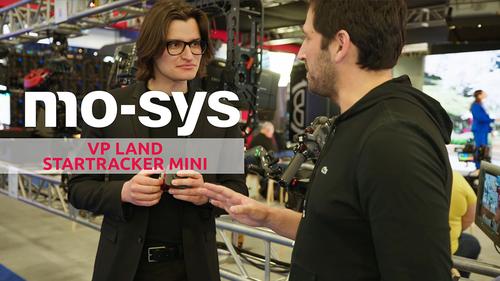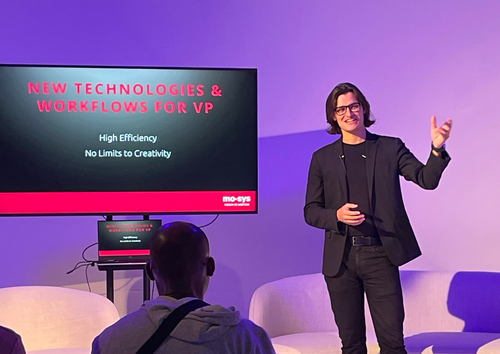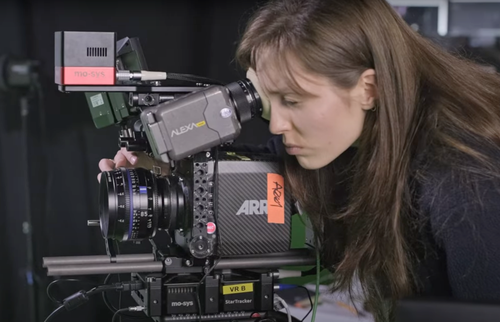Immortals - Genie: Technology for the Gods
The Mo-Sys Genie‘s debut on a Hollywood film was on the set of director Tarsem Singh’s $75 million Hollywood feature Immortals (2011). Genie operator Allan O. Lückow shares the story of how Genie (formerly "Chameleon") became a vital production tool for the film.
Testing the Mo-Sys Genie on the Set of Immortals
Lückow recalls that the system was initially tested by director Tarsem Singh several weeks before Immortals went into full production at La Cité du Cinéma Studio in Montreal, Quebec.On set, Lückow set up Genie using a camera with an Oconnor 120EXe sensing head. He also set up a laser on a dolly and equipped a techno crane with an encoding kit. Though doubtful of this new tool at first, in case it might slow down the production process, the Immortals production team were all interested to see how the new system worked. As soonas the crew saw Genie in use, Lückow noted, their skepticism dissolved.
The test on set took only two hours, with Singh and Lückow working to see whether the tool would be able to keep pace with Singh’s famously fast-moving shooting style. The encoded dolly was initially parallel to the set as Lückow lined up the CG model in Genie. “Everything was lined up, and then all of a sudden Tarsem said, ‘Let’s move the dolly up into the set.’ He wanted to see if that was possible. And of course it was possible, because you just move the [CG] model around and you’re all set.” After two hours of testing Lückow recounts, the director announced, “Okay, I like the system. The gentleman can stay.”
“Everybody was cheering, clapping and patting my shoulder. Doing stuff like this requires a really good, simple to use, stable system that is versatile enough to run around on a film shoot. “On the model shoot, Tarsem was running around, doing all kinds of different set ups, with cranes, dollies, pan and tilt on high lifts, looking up, looking down in dust and smoke, with hundreds and hundreds running around. And Genie worked perfectly from day one to the end.”
The Director’s Tool
Standing only a metre away from the director on a big Hollywood shoot, Lückow realized that he was operating “a new and important tool.” “What tells a little about how good and important a tool is for a director – you don’t have to fight for a space on the stage floor. Since it was the director’s tool, I didn’t have to be the first to come to the new location. The space was already reserved.“It was like an oracle coming on set, solving problems. That gives you peace of mind.” As the story is set in ancient times, Singh soon christened the [Mo-Sys] system ‘the Moses’.
When Singh wanted to place a horizon line on a virtual shot at one point, Lückow recalled, “It was very important for him to understand where in the virtual world he was moving around. It was very important that the actors and everybody on the set also understood what ‘world’ this shot was in. ” Eye lines were extremely important for the film, which similar to films like 300 and Avatar depended almost entirely on a CG/VFX world.
“We were on top of God’s Mountain, looking down on the ‘human world’ set beneath us. It was very useful to have the virtuals [CG models]. We did a lot of 30 foot and 50 foot techno moves, but it was so easy to explain to the actors they should look down on the ‘human world’ and not look out to the horizon, because the human world was actually way below them.” And since Tarsem is such a perfectionist, he needed the virtuals [CG objects].”
Lückow reports that “more and more clients want to have previs on set. Genie provides that, and it’s not a budget restraint. It doesn’t require five people sitting behind twelve computers. It’s as easy to operate as a video assist.”
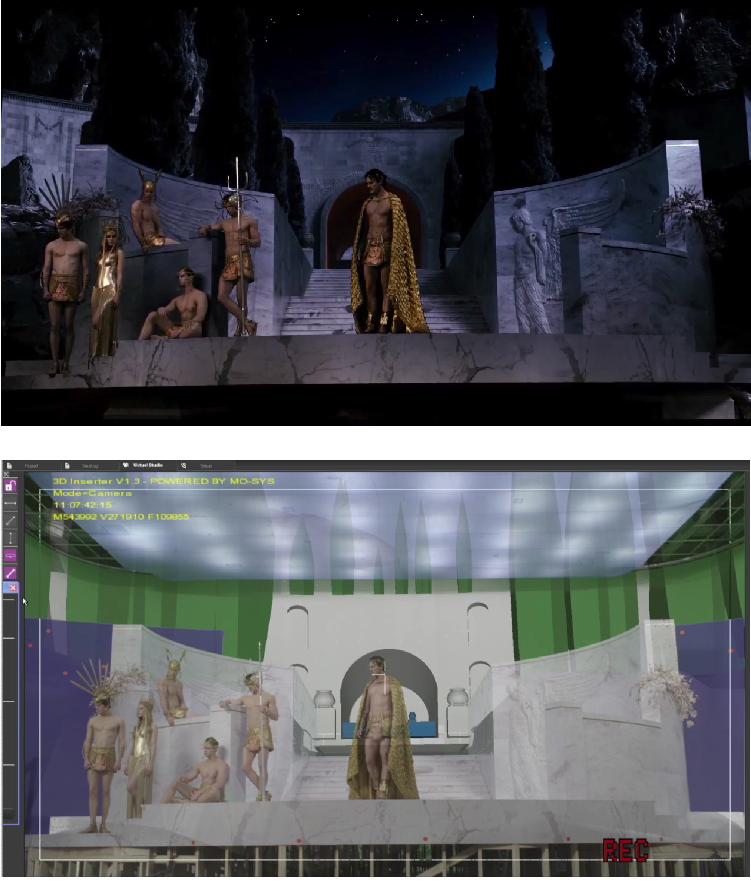
Cost Savings
Before they actually saw it in operation, no one on the Immortals team wanted to take responsibility for Genie, budget-wise. “Everybody tried to push it away because it was an extra thing. It was three or four weeks before the big shoot that they took the decision,” Lückow recalls.“They used it a lot for next day edits and dailies. You can use the data in the whole pipeline. The motion data was a huge part of it, because it was just recorded under the hood. That’s a massive feature of this system because that’s where you save the money.”
Use of Genie on the set of Immortals has disproved the notion ‘you don’t save money on giving the director an extra tool.’ “With Genie, direcotds and producers can say, ‘If I use this tool I can save 80percent of the post tracking, and this number of shooting days and this number of days for post.’ We saved money, and that is really important.”
Producers knew that a shot was right the first time, without guess-work or extra takes. The director was able to direct both CG and live action worlds without compromises made later due to missing visuals. The editors were able to work with pre-composites and see what the final effect would be during the editing process. The DP saw where the virtual light sources were and knew how to make the real world set match it. The crew became more efficient and motivated as they were able to see the composite scene and become immersed in the director’s vision.
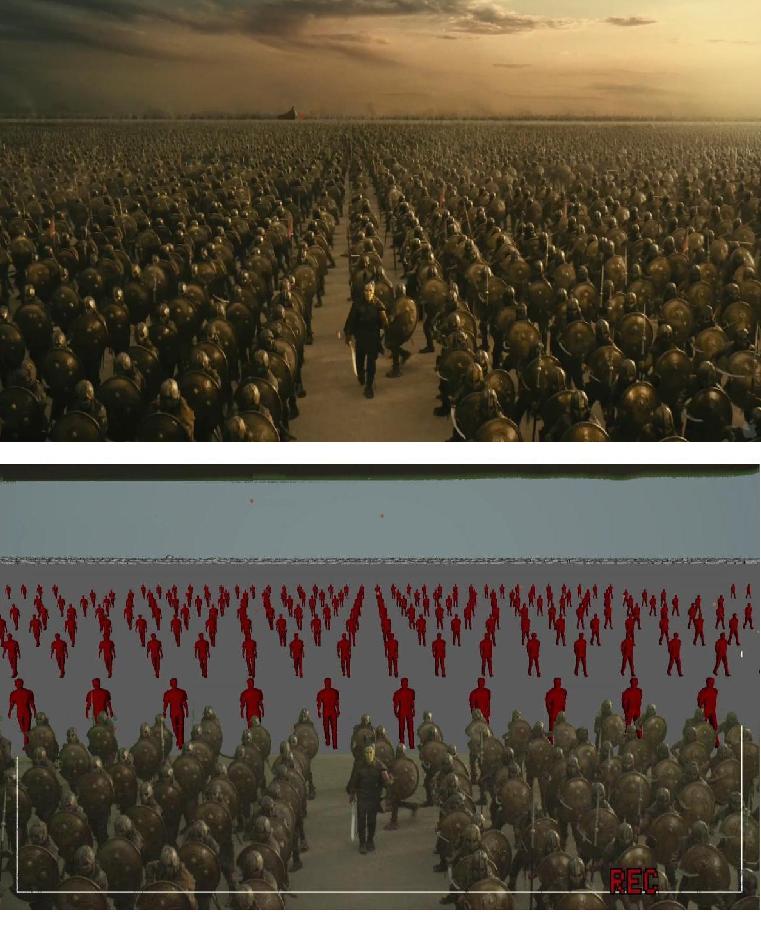
A Fast-Paced Shoot
Lückow notes that when shooting the film, the challenge was to be able to meet the shooting’s pace. The set comprised 80,000 square metres, making it necessary to do “one shot at one end of the studio and the next shot at the other end. The system had to be very mobile and very ready.”
Lückow’s contract allowed him a 15 minute call at any point so he could set up the system and align the CG models. “But actually it turned out that the set up was very fast. And since you always waited on something else – lighting, lens change, monitor moving – I never really needed to call those 15 minutes.”
Life before the Genie
Without Genie, Lückow notes, the shoot would have gone the way it did “in the old days. There would have been a lot of people trying to imagine on set during the shoot where the virtuals were – ‘I think the mountains are over here. Let’s agree that the mountain is in that direction.” This required a lot of scripting, “because back in the days when we didn’t have a previs on set, you needed a lot of notes."
“Now you can just take a frame grab from Genie where the director and the DP agree on the framing. Then you bring that along to the pipeline and say, ‘This is how we’ll shoot it, this is what the intention is, and this is how everybody thinks it looks good.’ That’s a very strong tool, because imagine having thousands and thousands of plates and frames, then having to communicate those to a lot of people in the post pipeline. It’s just difficult if you don’t have that combined image.” This meant that Singh, Galvin and the producers were all able to agree, on set, how the visual effects were intended to work in post. “Having all these combined images from the shoot as a starting point for post, is a very strong feature. Back in the day you couldn’t record the motion data.”
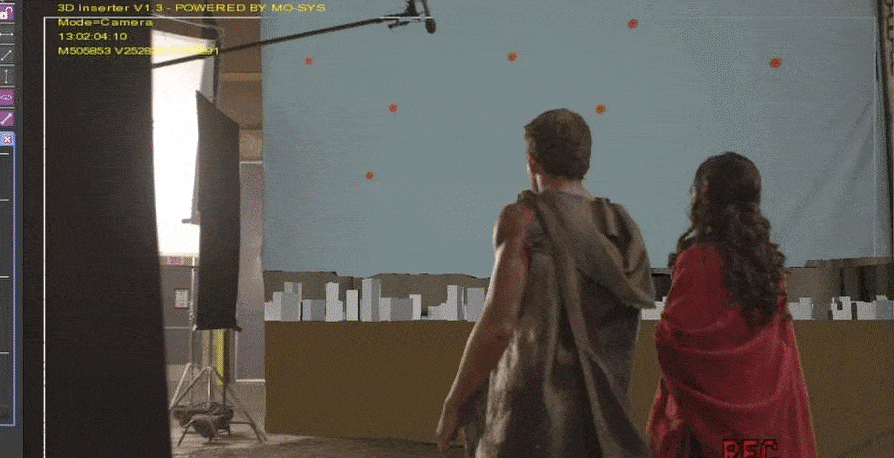
That process is now “very easily achievable” Lückow reports, “since you record all the moving data. You can see the virtual with the real life footage in the dailies, since you have all the tracking data. A strong tool! Very different to not having it. It eliminates whole parts of the workflow from the days before Genie was invented.”
Next Generation CG/Live Action Technology
In an interview after the release of Immortals, director Tarsem Singh explained how well Genie worked for him. “I was able to construct a tableau. If some films are like comic strips, this is a painting strip. The system sees past the green screen, so I could control the composition.” The director describes his pace as moving “at breakneck speed,” adding that the learning curve for those new to the set “can be a bit steep.” On Immortals he worked with veteran collaborators DP Brendan Galvin and production designer Tom Foden. VFX producer Jack Geist and VFX supervising producer Raymond Gieringer constructed much of the film’s stunning visual effects.
Gieringer commented on the films demands. “Just taking the environments into account, we had a large-scale effects show. Then within the environments we had a lot of effects:enormous battle scenes, mountains collapsing, gods and Titans battling. There are over 100 shots that involve special effects.” Each of the 18 ‘real world’ sets was used to create a different virtual image, with some shots requiring 360 degree views. Gieringer noted, “Tarsem is very specific in terms of his framing, and his composition is amazing, unlike that of any director I’ve ever seen before. We made a very beautiful, somewhat stylized film, with plenty of bang for the buck in terms of the virtual.”
A technically demanding production, the visual effects on Immortals were complex and wide-ranging, and required cutting edge tools. DP Brendan Galvin commented that Genie enabled directors to “pre-visualize, so you can see beforehand what it will look like within the CG extension or a CG world. Tarsem could see a person’s head come over a mountain that doesn’t exist. We used it in the monastery shoot, looking down from the monastery onto the encampment with the Heraklions, so you can see where all the stuff that’s not actually there will be.”
Relativity Media CEO Ryan Kavanaugh commented that new 3-D and VFX technology used in Immortals meant the production could go “one step beyond” what was possible when James Cameron was shooting Avatar.
With the Genie on the market, directors have an invaluable tool for use in the increasing number of VFX and 3-D films now being made.


